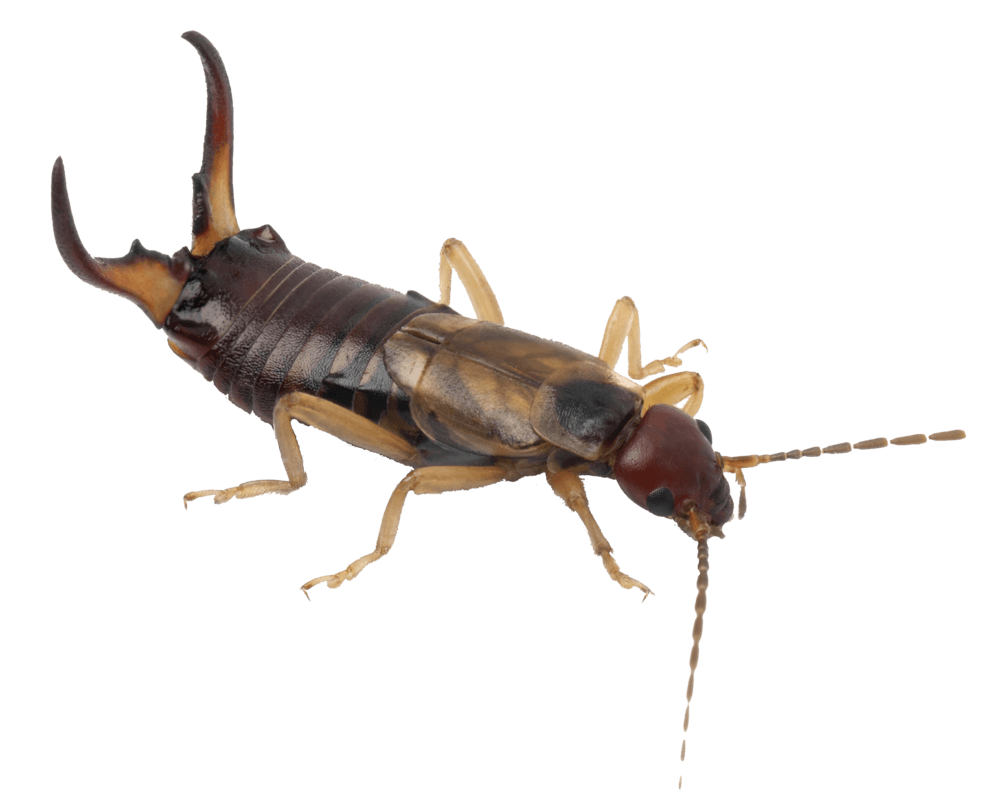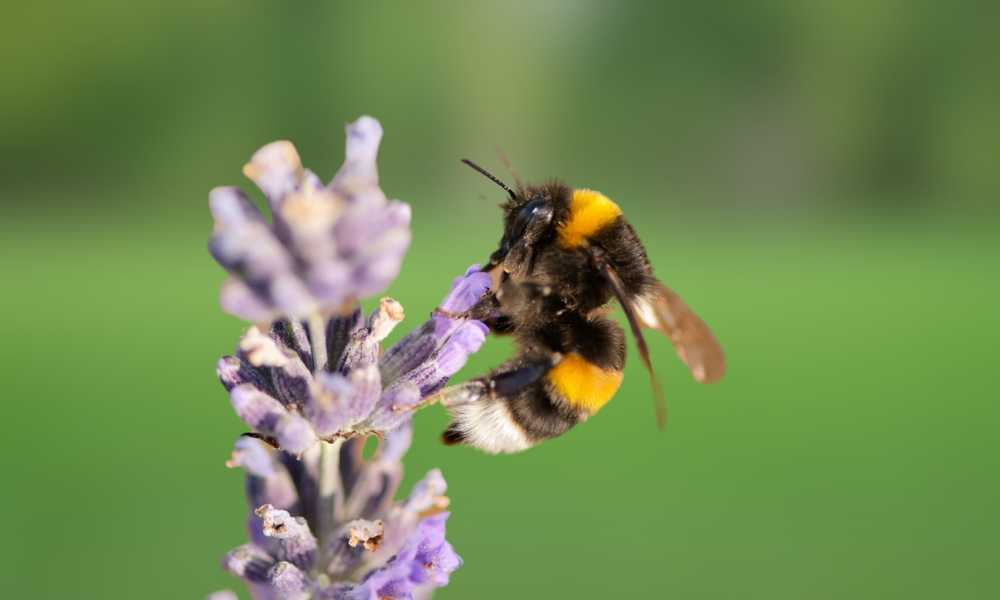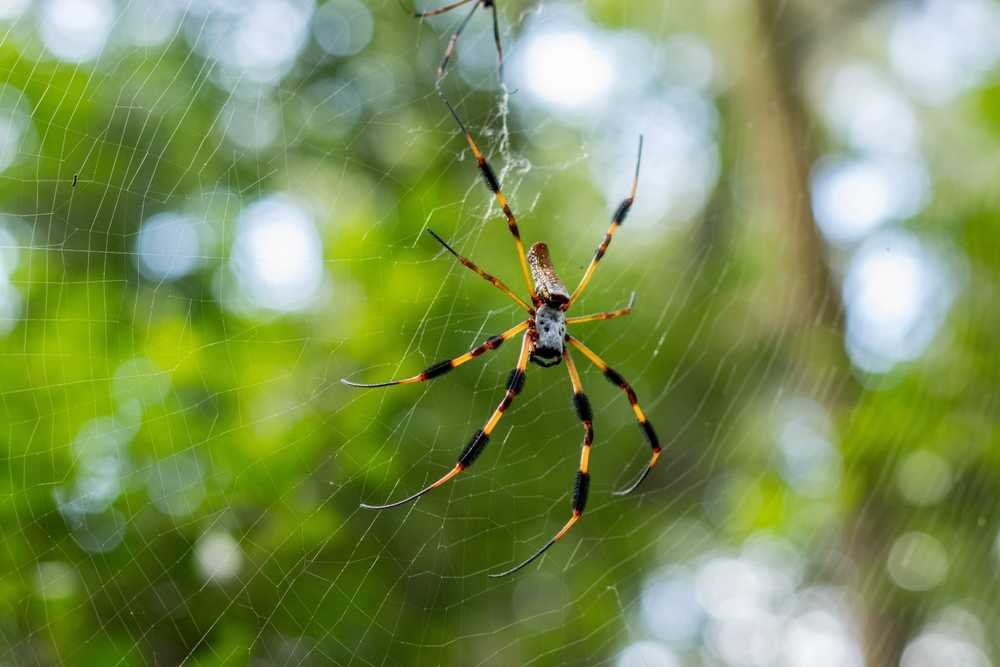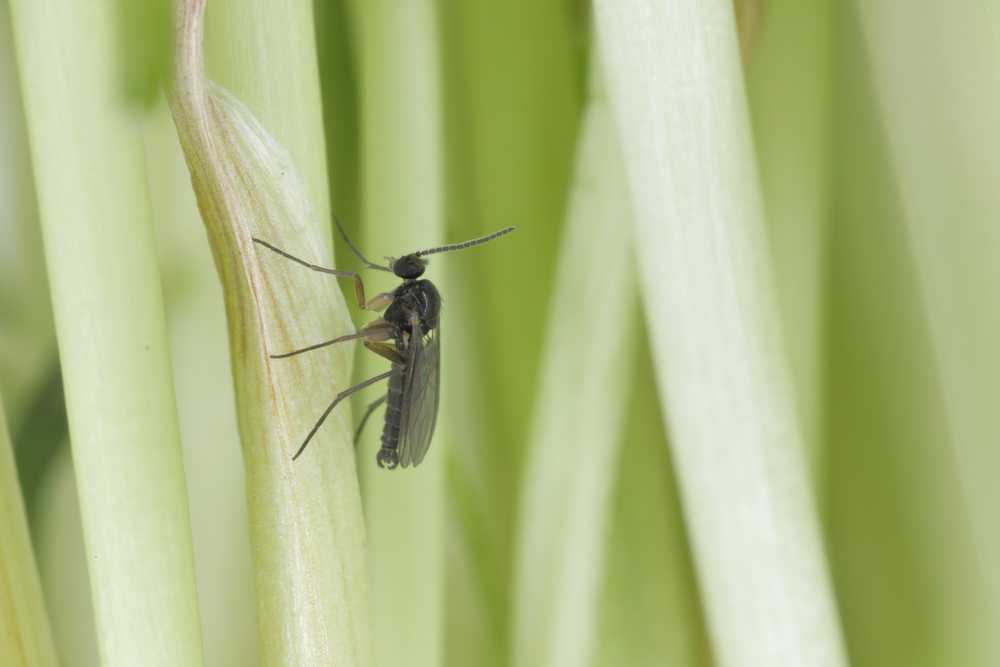Earwigs
"*" indicates required fields
Earwigs (Dermaptera)
Treatments for this pest are included in these services:
Earwigs get their names from an old European myth that they crawl into human ears and feed off of brains. In reality, earwigs are generally harmless to humans. Though this myth has been debunked by scientists, many are still creeped out by these occasional pests because of their forceps-like pincers on their abdomens that are used in self-defense against other insects. There are about 2,000 earwig species across 12 families, each with unique behaviors and habitats.
What are Earwigs?
Earwigs are fascinating insects that belong to the order Dermaptera, a name derived from the Greek words for “leather wing.” This name aptly describes their unique wing structure, which is leathery and often folded beneath a set of forewings. One of the most distinctive features of earwigs is their pincers, or cerci, located at the end of their abdomens. These pincers serve multiple purposes, including defense, capturing prey, and even assisting in mating rituals.
Earwigs are generally medium-sized insects, with their color ranging from brown to black. Some species also display yellow or tan stripes on their legs or bodies, adding to their distinctive appearance. With approximately 2,000 species of earwigs found worldwide, they are a diverse group of insects. In the United States alone, there are about 28 different species, including the well-known European earwig.
How to Identify Earwig Species
Earwigs are mostly nocturnal insects that hide in small crevices where they can thrive in a moist environment. Active at night, earwigs feed on a wide variety of plants and insects. While harmless, earwigs can still become a nuisance when they invade homes, businesses, and gardens. Earwigs bite when threatened, but their bites are not dangerous.
One of the key identifiers of earwigs is their long, curved pincers at the end of their abdomen. They look intimidating but are not poisonous. You can also identify earwigs by their:
- Size – range anywhere from 1/4 inch to 1 inch long
- Color – usually dark-brown
- Wings – shimmering, paper-like wings are folded beneath a set of forewings (but are usually not used to fly)
Life Cycle and Reproduction
The life cycle of earwigs is a complex process that involves several stages of development. Female earwigs play a crucial role in this cycle, as they lay eggs in small burrows in the ground, typically in outdoor environments. These eggs hatch into young earwigs, known as nymphs, after several weeks. The nymphs undergo five molts before reaching adulthood, a transformation that can take several months.
During this developmental period, female earwigs exhibit remarkable maternal care. They tend to their eggs diligently and continue to watch over the earwig nymphs until they have undergone their second molt. This level of care is quite unique among insects. In contrast, male earwigs have a minimal role in raising their young, focusing more on mating and territorial defense.
Earwig Behavior and Habitat
Earwigs are nocturnal creatures, meaning they are most active during the night. During the day, they seek refuge in dark, confined, and damp areas, which provide the moisture they need to thrive. Common hiding spots include under piles of lawn debris, mulch, or within tree holes. Earwigs are also attracted to lights, so it’s not uncommon to find them on patios and porches during warm summer evenings.
While earwigs are generally harmless to humans, they can become a nuisance if they invade homes or gardens. Although they may bite if threatened, their bites are not dangerous. Their primary diet consists of decaying plant material and dead insects, making them both scavengers and occasional plant pests.
How to Prevent Earwig Infestation
Household pests like earwigs find their way into buildings through open cracks and crevices near doors and windows. Be sure to seal these entryways to prevent earwigs from sneaking in. Earwigs are also attracted to moisture and wet areas, so if you discover earwigs in your damp basement, consider adding a dehumidifier to prevent them from finding comfortable places to hide. Outdoors, you can prevent earwigs by tidying up your lawn, removing firewood piles, and trimming overhanging branches and shrubs.
Earwig Control Solutions for Managing Populations
If you suspect that your home or business has been infested by earwigs, don’t fret. Give PURCOR a call; we’ll perform a proper inspection to identify the insects and provide top-notch pest control solutions. Earwig populations can be managed effectively with proper pest control solutions. Contact us for a quote and say goodbye to earwigs!
Chemical Control Methods
In cases of severe earwig infestation, chemical control methods can be an effective solution. Insecticide dusts are useful for targeting earwigs as they attempt to enter homes, while insecticide granules or liquid sprays can be applied to mulched areas where earwigs like to live and feed. It’s crucial to select products specifically labeled for earwig control and appropriate for the areas being treated.
However, it’s important to note that insecticide treatments offer only temporary relief. For long-term control, it’s essential to address the underlying conditions that attract earwigs. This includes removing, reducing, or drying out the places where earwigs like to live, such as damp areas and piles of organic debris.
Contact us for a FREE quote and say goodbye to earwigs!



